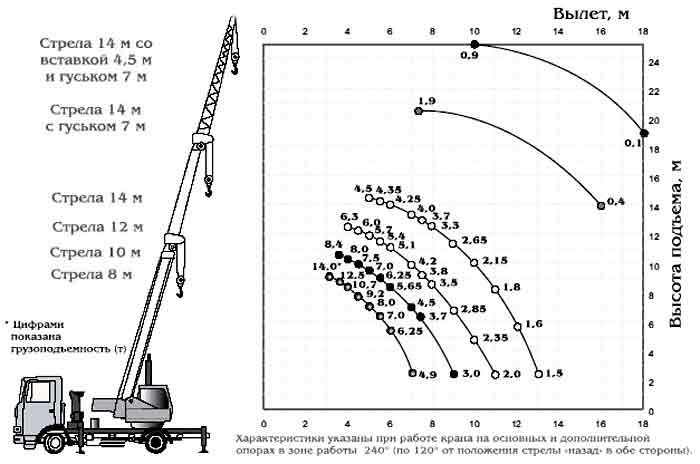
Disadvantages of the Nissan Qashqai J10
Content
In Nissan Qashqai compact crossovers, problems are as inevitable as in any other car. Especially when it comes to used cars. What to look for when buying? The article will focus on the cons, possible breakdowns of the Qashqai of the first generation.

Minus Qashqai J10
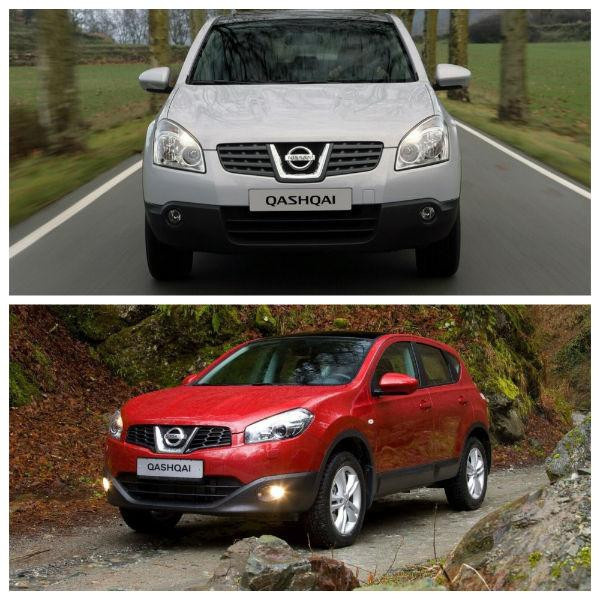
Qashqai J10 before upgrade from above, after from below
Production of the first generation Qashqai crossovers began in Sunderland in late 2006. The cars hit the market in February of the following year. The figures testify to the success: in 12 months, the number of sales in Europe exceeded the mark of 100 vehicles. December 2009 was marked by a restyling of the car, and the assembly line of the updated crossover was launched a few months later.
The Qashqai in the back of the J10 was equipped with 1,6 and 2,0 liter gasoline internal combustion engines, as well as one and a half liter and two liter diesel engines. A couple of engines were manual transmission, automatic transmission and continuously variable transmission. What are the disadvantages in terms of body, interior, suspension, as well as powertrains and transmissions, do Nissan Qashqai cars have?
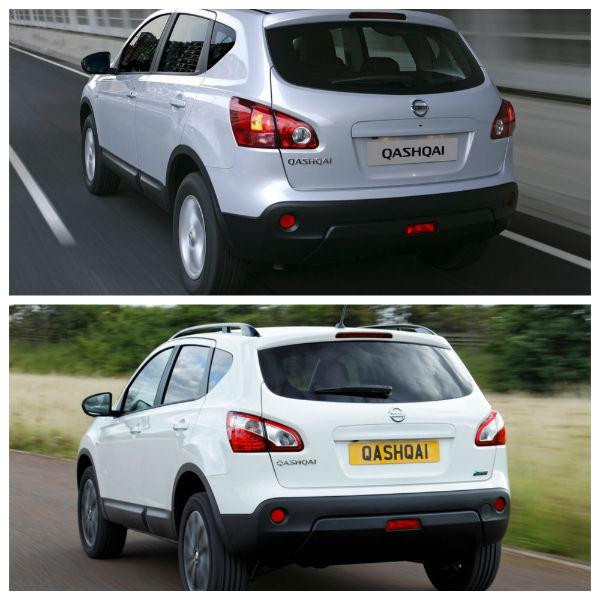
Rear view before upgrade (top) and after (bottom)
Cons body Qashqai J10
Many noted the shortcomings of the Nissan Qashqai in terms of bodywork. During the operation of the first generation cars, there were the following problems:
- predisposition to the formation of chips, scratches (reason - thin paint);
- high risk of cracks on the windshield;
- short service life of the wiper trapezoid (rods wear out in 2 years);
- regular overheating of the left rear light board, which leads to the failure of the part (the reason is close to the metal surface of the body panel);
- depressurization of headlights, manifested by the presence of persistent condensate.
Qashqai J10 before upgrade from above, after from below
Weaknesses of the Qashqai J10 suspension
Weaknesses of the Nissan Qashqai are noted in the suspension. Minuses:
- Rubber and metal hinges of the front levers do not serve more than 30 thousand km. The resource of the rear silent blocks of the front subframe is slightly more - 40 thousand. Over five years of operation, the hinges of the reset levers are destroyed, and the adjustment of the camber of the rear wheels is difficult due to damaged bolts.
- Steering rack failure can occur after 60 km. Traction and tips do not shine with a resource.
- Rapid wear of the transfer case on all-wheel drive versions of Qashqai. Red flag - oil-permeable seals. The frequency of changing the lubricant in the transfer case is every 30 km.
- Cracking of the cross of the propeller shaft during a long idle time of the car in the open air. As a result, the wear of the node increases.
- Ill-conceived arrangement of the rear brake mechanism. Dirt and moisture accelerate the souring of metal parts, so checking the mechanism is a must for every pad update.
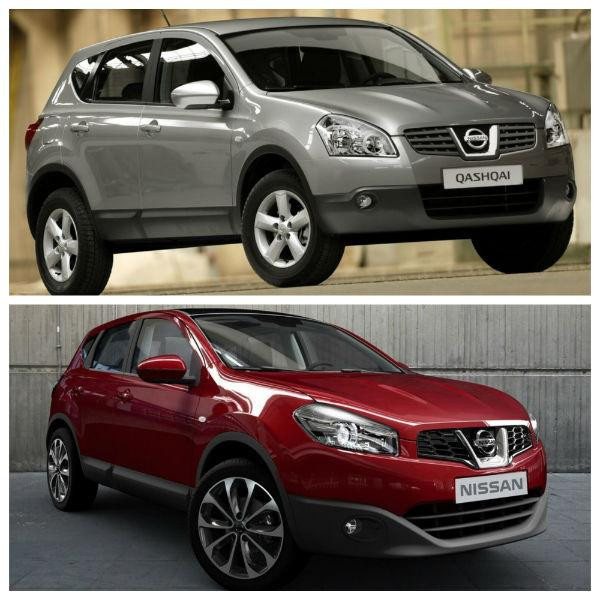
Qashqai before update on top, 2010 facelift on bottom
Salon problems
Nissan Qashqai sores also appear in the cabin. There are complaints about the quality of the cabin. Can be distinguished:
- the coating on plastic parts quickly peels off, the seat upholstery is subject to rapid wear;
- violation of the integrity of the wiring under the steering wheel (signs: failure of control buttons, interruptions in the operation of outdoor lighting devices, inoperative driver airbag);
- the wiring connectors around the driver's feet are bitter (the problem often makes itself felt in winter, in conditions of high humidity);
- fragility of the furnace engine;
- short service life of the air conditioning compressor clutch (failure after 4-5 years of operation).
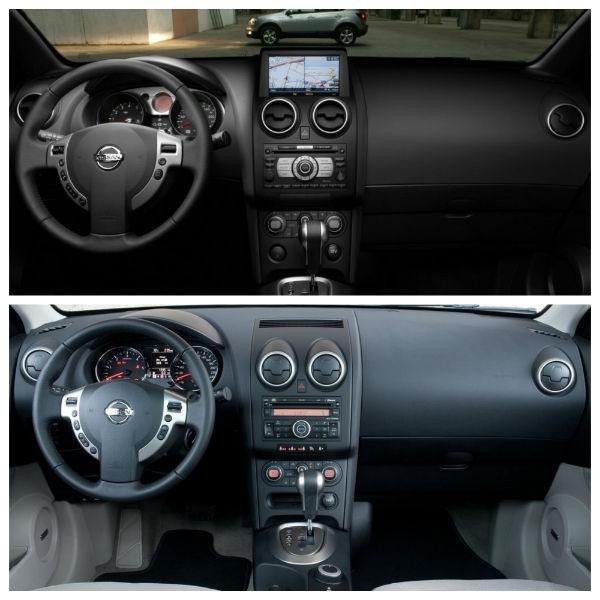
The interior of the updated Qashqai (below) in 2010 is practically no different from the previous design (above)
Engines and transmissions Qashqai J10
On the first generation Qashqai, officially sold in Russia, only 1,6 and 2,0 liter gasoline engines were installed. With the 1.6 engine, a five-speed manual gearbox or CVT works well. The two-liter power plant is complemented by a 6MKPP or a continuously variable drive. In Nissan Qashqai crossovers, the shortcomings and problems depend on the specific combinations of engines and transmissions.

Nissan Qashqai J10 with HR16DE engine
Petrol 1.6 HR16DE
The disadvantages of Nissan Qashqai with HR16DE engine are mainly related to oil scraper rings, rear engine mount, suspension belt and radiator. Rings can lie down after the car passes 100 thousand. The reasons are hard driving and irregular replacement of engine lubricant. In urban areas, driving at low speeds is a frequent occurrence. It is in this mode that Qashqai has a harder time, especially versions with a continuous variator. The timing chain was changed during the overhaul of the engine.
The resource of the rear support of the power unit is only 30-40 thousand. Characteristic signs of a breakdown are increased vibrations of the body. Installation of a new belt is required after 3-4 years of operation. Another disadvantage concerns radiators: they are prone to corrosion. A leak may appear as early as 5 years after the purchase of Qashqai.

1,6 gasoline HR16DE
2.0 MR20DE
In terms of reliability, the two-liter unit is inferior to the 1,6-liter engine. The disadvantages are the following:
- the thin-walled head of the block “collects” cracks when tightening the spark plugs (there are cases of factory defects when the head initially has microcracks);
- instability to overheating (deformation of the block contact surfaces, cracks on the crankshaft journals);
- the impossibility of using gas-balloon equipment (the service life of Qashqai with HBO is short);
- tensile timing chain (may require replacement at 80 km);
- overlying rings (typical breakdown of gasoline units);
- ICE oil pans are leaking on five-year-old crossovers.
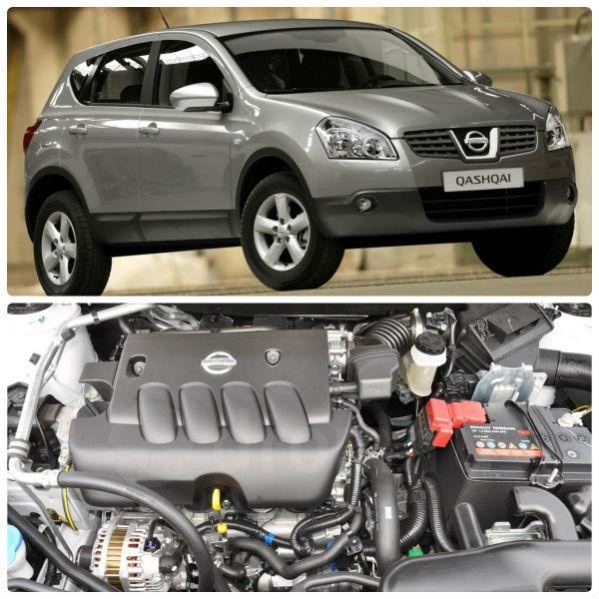
Nissan Qashqai with MR20DE engine
CVT JF015E
On Nissan Qashqai cars equipped with a JF015E variator (for a 1,6 gasoline engine), weaknesses and shortcomings appear quite quickly. There were cases when a stepless variator failed after a year and a half. The average resource of the mechanism is 100 thousand km.
JF015E Problems:
- pulley cone bearings during improper driving (sharp start and braking) wear out quickly, and metal chips cause irreparable damage to the valve body and oil pump;
- a drop in oil pressure leads to slippage of the V-belt, deterioration of dynamics;
- expensive repairs - you can bring a broken device back to life for an average of 150 rubles, and buy a new one - 000.
The streaming feature reduces the chance of a good quality copy on the market by up to 10%. This fact is also a disadvantage.

MR20DE 2.0 petrol
CVT JF011E
A continuously variable transmission marked JF011E (for a 2.0 gasoline engine) will not show characteristic sores when used correctly. Parts wear and tear is inevitable, but regular oil changes and careful driving will prolong the life of your CVT.
Service workers confirm the relevance of repairing a worn-out variator, although the cost of restoration can be 180 thousand rubles. The new device will be even more expensive. The complexity of the repair is due to the need to replace the cooling system of the power plant. Wear products are deposited, making complete cleaning impossible.
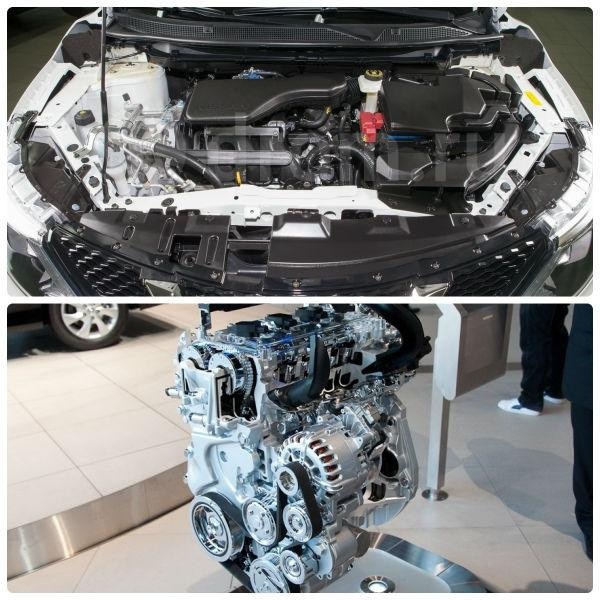
MR20DD
You can understand that a serious breakdown of the variator is close to the characteristic signs by the presence of jerks and lags when driving and starting off. If the dynamics of the car have deteriorated, and a strange noise is heard from under the hood, then these are alarming symptoms of an impending transmission failure.
Manual gearboxes
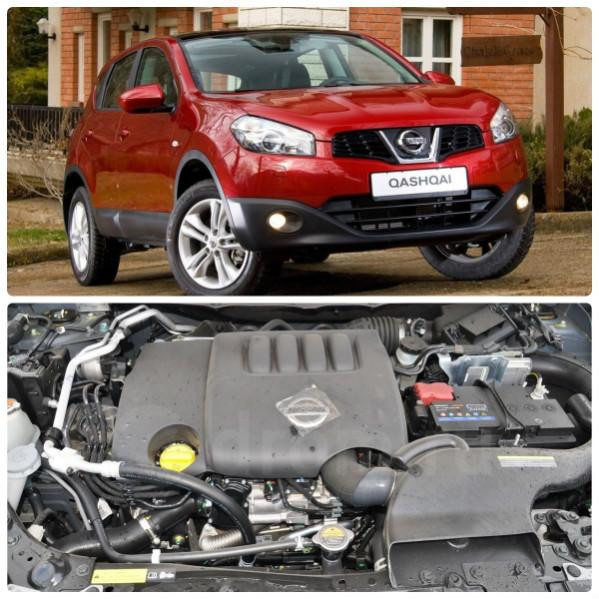
Nissan Qashqai M9R Diesel 2.0
In Qashqai cars, sores of a manual transmission appear only when driving incorrectly. We are not talking about characteristic shortcomings and systematic failures. According to the factory regulations, the transmission oil change interval is 90 km. Despite the fact that the manufacturer has canceled such a procedure, repairers and maintenance personnel recommend adhering to the above rules. The box will prove its reliability with regular lubrication renewal, which in difficult conditions is better to do earlier, i.e. halve the interval.
Conclusion
In Japanese Nissan Qashqai cars, flaws and shortcomings appear when used improperly, for example, with a negligent attitude to maintenance rules. Of course, there are also "native" problems associated with certain engineering flaws. For example, in terms of the body, interior, suspension, powertrain and transmission of the J10. Some of the shortcomings considered were eliminated during the restyling and release of the second generation Qashqai.

